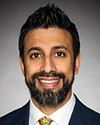Thank you, Mr. Chair.
I want to begin by thanking the committee for the opportunity to speak to you today.
I work at Health Canada in the testing, contact tracing and data management secretariat. We know that COVID-19 has had devastating impacts right across the country, and the aviation sector is no exception. I'm sure the efforts of this committee to examine the consequences of this pandemic will undoubtedly shape the efforts to strengthen that sector, which is so vital to the Canadian economy and the lives of Canadians.
The efforts of the health portfolio are focused on protecting public health and looking at the ways that testing can contribute to that effort and can help social and economic activity. Testing is one of a number of risk mitigation measures that we've employed. We've secured and distributed over 5.7 million tests to the provinces and territories over the last several weeks.
I'm pleased to note in particular that we are getting closer to a national target of administering 200,000 of what are called PCR tests, which is the gold standard in COVID-19 testing—and that's 200,000 tests per day. We've also released guidance on rapid testing developed in consultation with provincial and territorial health authorities, rapid tests that have the potential for faster turnaround times, lower costs, and administration on a more frequent basis.
We're looking at how best to use testing technologies individually or in combination with other public health measures to stop transmission, protect individuals and detect the virus early. For example, in October Health Canada launched the Industry Advisory Round Table on COVID-19 Testing , Screening, Tracing and Data Management, co-chaired by Health Canada and by Catherine Luelo, senior vice-president and chief information officer at Air Canada. The round table enables the federal government to hear directly from leaders in Canadian industry from across the country in a variety of sectors on public health measures, and including activity like testing in the workplace.
On borders, we're looking at border pilot projects and how they can help us acquire science-based evidence to inform how best to reopen our borders. In partnership with the Canadian Institutes of Health Research, we supported McMaster HealthLabs' international border surveillance study, which occurred at Pearson Airport earlier this fall. The interim results from the McMaster pilot showed a COVID-19 importation rate from international travellers at approximately 1%, which is fairly high. We look forward to receiving the final report in the coming weeks.
Our partners at the Public Health Agency of Canada have also worked very closely with the Government of Alberta on a program to examine whether quarantine could be reduced for international travellers without compromising public health and safety. The pilot started on November 2 and we're actively monitoring the results in close collaboration with the provincial government.
We continue to engage with stakeholders, including air carriers, airport authorities, and with other departments including Transport Canada, on border measures. An effective response to the pandemic cannot succeed without the strong partnerships that exist at all levels of government, across jurisdictions, and with key stakeholders who are all equally invested in protecting the health and safety of Canadians.
With our partners we will be looking at, for example, the recently released International Civil Aviation Organization's guidance to see how we can apply it in a Canadian context. We also have to bear in mind that travellers from Canada are having to meet testing entry requirements of other countries that they decide to visit. We will need to balance that demand for screening of those coming into Canada with broader screening needs to protect public health, and factor in, for example, the health human resources that may be required to conduct that kind of screening.
In closing, testing is one important aspect of protecting public health, alongside contact tracing and other preventative measures. How testing applies in the travel context will need to be studied. At the same time, we need to ensure traveller vigilance, not just to protect travellers, but also any aviation worker they come in contact with.
I thank you for the opportunity to make these short remarks, and I will be pleased to answer any questions.




